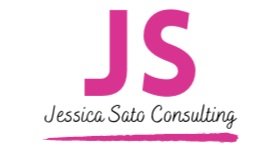Business Building Phase 2: Your Framework
Last week, I laid out the 5 phases of business building and likened it to building a home. First, you must lay the foundation and ensure you’ve got all your ducks in a row legally. Once that foundation is secure, you start building.
When it comes to construction, framing is where your business begins to take shape. With the business plan and all the elements you worked through in the foundation phase in hand, it’s the framing, the actual walls, that bring the design to life. A building’s frame is the skeleton, the bones, that supports all of the features you want and are essential to serving clients and making money.
A business with a solid framework has two things: extreme clarity on their ideal client and a compelling offer.
As a business owner, you get to decide who makes a perfect client for you and how you can help them. This requires you to do your due diligence and really dig into their needs, wants, hopes, and desires. The person you want to serve needs to know that you understand their struggle. They need to hear their thoughts and feelings expressed in their language and feel like investing in your services is a no-brainer. That’s why it’s critical you do your research, validate your assumptions, and use it to create your business’s framework.
Too often, I see people jump from Phase 1: Foundations to the fancy fun stuff, like a pretty website or expensive branding photos. And while those are nice and will be important, they won’t make for a lasting business or give you the ability to remodel and grow as your business evolves. Businesses that are lacking real structure – good bones – are like those houses where the owner just keeps adding on additions and there’s no clear design. They never look right and they feel awkward inside.
Let’s make sure we build out the walls before paint, and that starts with knowing who you serve.
So, how do I figure out who my ideal client is and where to find them?
There are countless ways you can identify your ideal client (also known as buyer persona, ideal customer avatar, or perfect prospect). But at the core, this process involves the creation of a fictional person (often based on yourself or someone you might know who has similar characteristics and traits) and a deep dive into their personality, career, interests, hobbies, lifestyle, marital status, etc.
I can’t overestimate how important this process is. More often than not, business owners are too generic; they want to keep their options because niching down (aka getting super specific about you who serve) seems counterintuitive. They say things like, “I can help anyone” or “I don’t want to exclude people.” And I get that. I used to feel that way too. But the more specific you get, the clearer you are about the problem you solve, who you actually help, the easier it is to grow your business.
These aspects of understanding your ideal client make it significantly easier to put yourself in places where your ideal client might hang out, which will simplify your marketing and sales efforts later down the road.
See which of these phrases you can honestly say yes to when it comes to knowing your ideal client.
I know my ideal client on a very intimate level.
I have validated my assumptions about my ideal client.
I know what frustrates and scares them.
I understand their biggest challenge and why they want to overcome it
I am very clear on the result they’re looking for
I know why they don’t take action.
I know what my ideal client needs to hear and feel in order to take the next step.
I am clear on what my ideal client’s next best alternative to me is.
I know where my ideal client spends their time.
If you have reservations about any of these statements, I encourage you to go back to the drawing board. Knowing who you serve on an intimate level is critical to the strength of your business’s framework. Without extreme clarity on who you serve, nothing else matters.
The other part of your business framework is your offer.
Businesses that lack clear and compelling offers will not thrive. That’s a bold statement, but an offer is what prompts the flow of cash. If there’s no offer, if people don’t see the value, and/or people don’t see how you can help them, your business won’t succeed.
Your offer, the product or service you’re trying to sell, is rooted in what you know your ideal client needs and wants. The more you speak to the client’s needs and challenges, their hopes and desires, the better your chances of success. A compelling offer is something your ideal client can’t refuse. Marlon Brando taught us that.
So, what makes an offer compelling?
At the core, a compelling offer:
1. Is targeted directly at your ideal client.
2. Speaks to a specific problem or challenge your ideal client has and the impact it’s having on their life.
3. Highlights the gap between where they are now and where they truly want to be.
4. Pinpoints the obstacles or barriers your ideal client is facing
5. Provides a step-by-step guide for overcoming those barriers
6. Is priced for value – meaning the cost is a no-brainer because the value of solving the problem far exceeds the dollars required
There are details like payment plans, guarantees, and the method of delivery that are factored in, but if you can hone in on these six pieces, all targeted at your ideal client, you’re going to have an incredibly strong business.
In the online marketplace, there’s a lot of talk these days about fancy tech solutions, the latest and greatest bells and whistles, and quick-win solutions, and while those features are nice on the surface, they don’t mean anything if your business doesn’t have good bones.
Extreme clarity on who you serve and a truly compelling offer make for good bones.
If you’re not sure how to find your ideal client, if feel like your offer isn’t compelling, or you’re not making money in your business, it might be time to hire someone to help you examine the strength of your framework. Yes, that might mean ripping out some dry wall and taking your business all the way down to the studs, but I promise, the effort will be worth it when you’re finally sitting on your back patio, sipping your beverage of choice, while you’re making money and your business is thriving.
Read the other articles in The Phases of Business Building Series:



